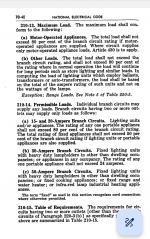brother
Senior Member
I am just curious as what was the history of the 'continuous load' rule. How did they come up with the 125% and 3 hours for needed to add the 125%, or allowing only wiring to be at 80% loading under 3 hrs. Why not 4 hours, or 2 hours etc..?


